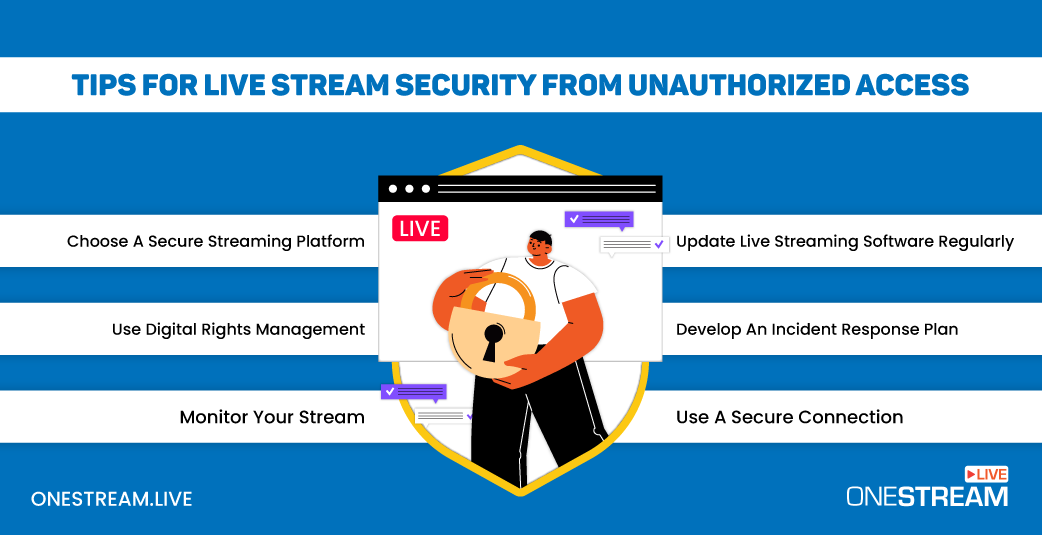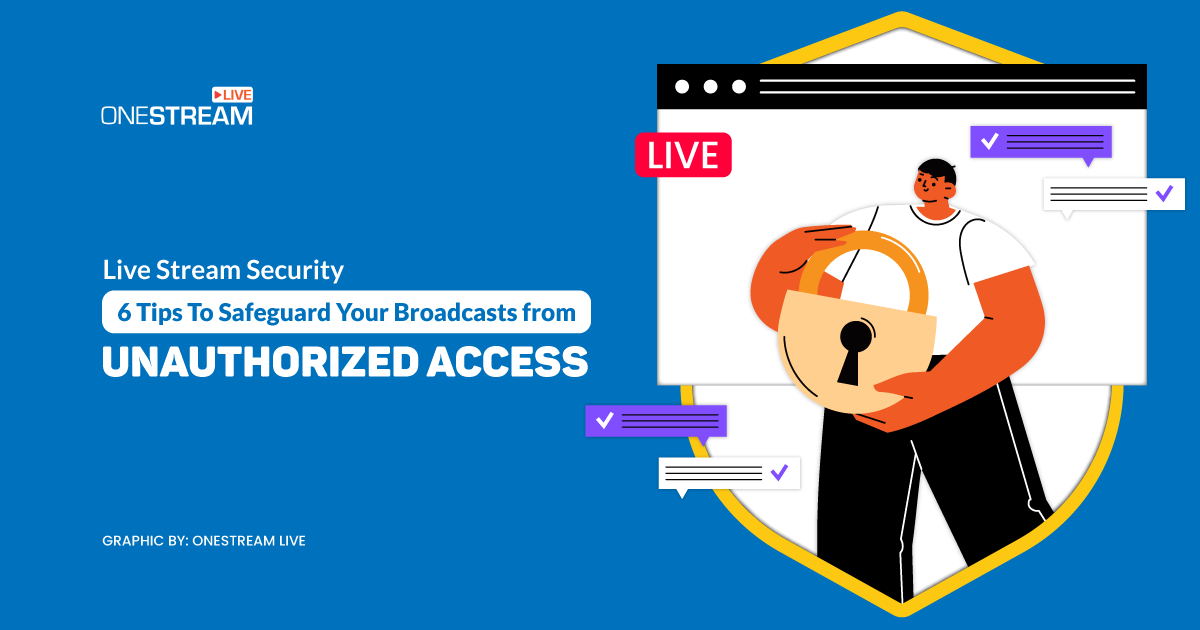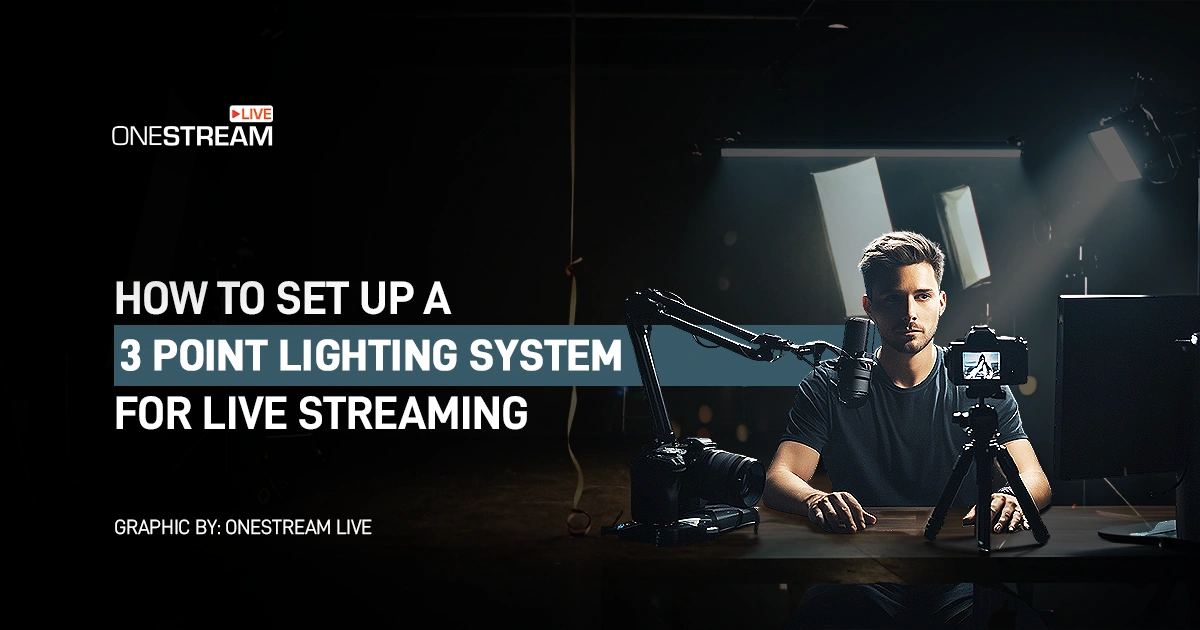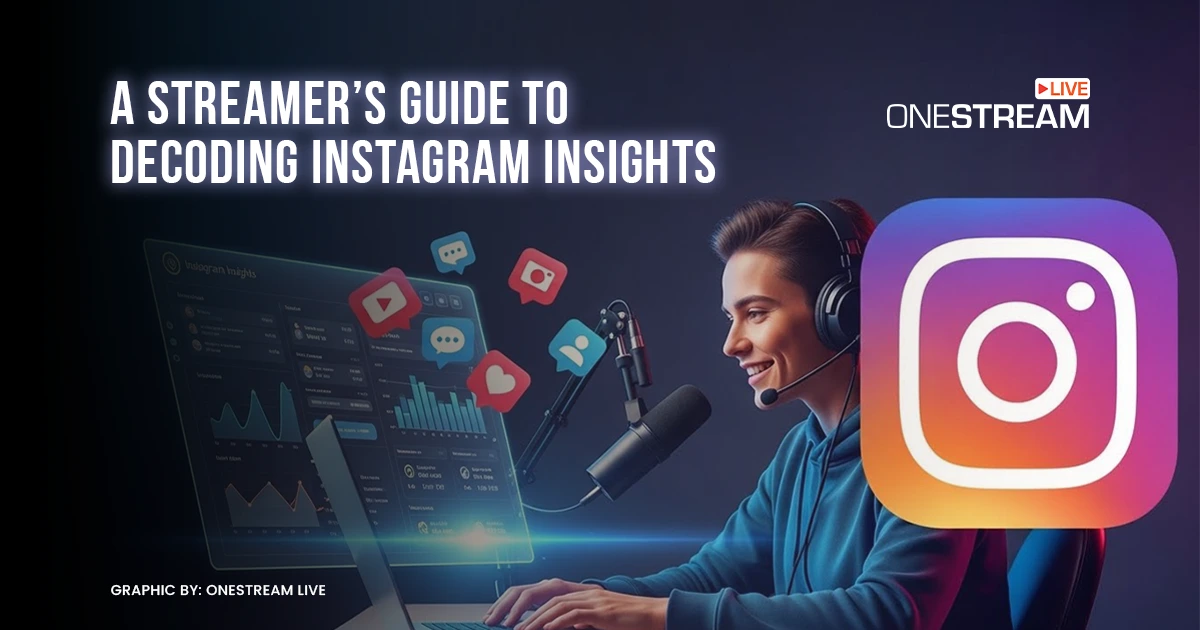Live streaming has become an increasingly popular way for influencers, entrepreneurs, and businesses to engage with their audiences in real-time. Whether it is a musician performing a virtual concert or a company hosting a product launch event, live streaming provides unique and interactive experiences.
However, it comes with the risk of unauthorized access, which can lead to disruptions, privacy breaches, and legal consequences. Failing to implement proper live stream security measures can damage your reputation, expose sensitive information, and compromise the trust of your audience.
With that in mind, here are six tips to safeguard your broadcasts from unauthorized access:

Choose A Secure Streaming Platform
The foundation of your live stream security lies in the platform you choose. Opt for reputable providers with robust security measures. Ensure you look for features like:
Multi-factor authentication (MFA): This live stream security step strengthens your account by adding another verification layer. Major online live streaming platforms like social media and e-commerce sites implement MFA to secure data files. The two-factor authentication (2FA) ensures that you’re the only person who can get into your account, even if someone else knows your password. For instance, when you log into your account, you might need a code sent to your phone to complete the login process.
End-to-end encryption: End-to-end encryption encodes transmitted data, rendering it incomprehensible to unauthorized individuals. For example, when you shop online, end-to-end encryption hides your payment information through encoding to prevent interception by cyber criminals. The encrypted data appears gibberish without the proper decryption key, making it useless to attackers.
Similarly, end-to-end encryption safeguards your live stream content from prying eyes during broadcast. This robust encryption method provides a secure virtual tunnel, protecting your data’s integrity and privacy throughout transmission.
Access controls: Prioritize live streaming platforms that empower you to control who can view your content. Aim for ones with password protection to ensure only those who know the password can watch.
Additionally, look for platforms that offer private streaming links. These links grant access to authorized recipients only. Some advanced platforms provide permission-based access levels, like the different user roles in a shared online document. This enables you to assign varying viewing privileges.
Content security features: Certain live streaming platforms provide embedded content watermarking or fingerprinting capabilities. These act like digital signatures, leaving an invisible mark or unique identifier on your stream. Such measures help detect unauthorized copies of your content circulating online.
Generally, a secure live streaming platform is crucial for safeguarding your broadcast against unauthorized access and ensuring the integrity and privacy of your content. These measures protect your live streams from threats and provide peace of mind for you and your audience.
Use A Secure Connection
Ensuring your live stream uses a secure HyperText Transfer Protocol Secure (HTTPS) connection is crucial. This encryption protocol safeguards the data exchanged between your streaming server and your viewers’ devices, preventing potential attackers from intercepting or eavesdropping on the transmission.
Without HTTPS, your stream is open to theft and misuse. HTTPS scrambles your stream’s data, making it unreadable to cyber criminals. This essential yet crucial live stream security measure shields your live stream content from prying eyes and ensuring it reaches your intended audience securely. Many reputable live streaming platforms automatically employ HTTPS encryption, but it’s wise to double-check and prioritize services that comply with industry-standard security protocol.
Use Digital Rights Management
Digital Rights Management (DRM) technology is essential for secure live streaming, especially for organizations that deal with sensitive information, trade secrets, or valuable intellectual property. It prevents unauthorized redistribution or sharing of your live stream content, even after legitimate viewers access it.
DRM typically involves encrypting your content and restricting access to only authorized devices or users with the proper decryption keys. This prevents unauthorized individuals from copying, sharing, or redistributing your live stream content without permission, giving you greater control over the distribution of your live stream content.
Update Live Streaming Software Regularly
Like any other application on your devices, your live streaming software can have vulnerabilities that cybercriminals might exploit. Regularly updating these tools is crucial to fixing these flaws quickly, making it harder for unauthorized users to access your streams.
Cybercriminals actively search for vulnerabilities to gain access to sensitive data. Outdated software exposes your live stream, allowing potential intruders to compromise your content. Therefore, install the latest updates from your streaming software provider to benefit from the latest live stream security improvements and bug fixes.
Reputable live streaming platforms and software providers typically notify users of available updates, addressing new vulnerabilities. This makes it easy to stay ahead of potential live stream security risks.
Monitor Your Stream
Actively monitoring your live stream can help detect and address unauthorized access attempts. This involves closely observing viewer counts for unexpected spikes, which could indicate illegitimate viewers accessing your content. Additionally, watch out for suspicious activity, such as comments or chat messages from unknown sources.
Many reputable live streaming apps and platforms offer built-in monitoring tools and analytics dashboards to assist with this process. The features provide real-time insights into viewer metrics, engagement levels, and potential live stream security threats. This proactive approach allows you to maintain a safe and controlled streaming environment, protecting your content from possible misuse or exploitation.
Develop An Incident Response Plan
Even with strong live stream security in place, there is always a chance of unauthorized access. Therefore, it is essential to have a detailed and updated incident response plan. This plan should outline the steps to take immediately after a breach, including how to lock down the live stream, assess the damage, and fix vulnerabilities to stop further issues.
Additionally, the plan should include clear communication protocols for transparently informing your audience and stakeholders about the live stream security incident. Providing timely updates and guidance can help maintain trust and minimize confusion or speculation.
Also, a response team should be designated to execute the plan and assign specific roles and responsibilities to ensure a coordinated and efficient response. Regular training and simulations prepare your team to handle real-world live stream security incidents effectively.
Final Thoughts
Securing your live stream requires a multifaceted approach encompassing technical measures, education, and constant vigilance. By following these tips, including choosing a secure platform, using a secure connection, and implementing robust live stream security measures, you can safeguard your live streams from unauthorized access. Remember, a proactive approach to live stream security empowers you to protect your content, maintain audience trust, and foster a safe and enjoyable live streaming experience for everyone involved.
OneStream Live is a cloud-based live streaming solution to create, schedule, and multistream professional-looking live streams across 45+ social media platforms and the web simultaneously. For content-related queries and feedback, write to us at [email protected]. You’re also welcome to Write for Us!









